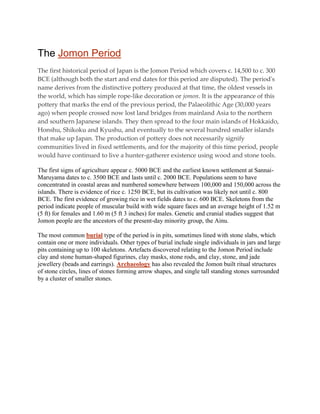Report
Share

Recommended
Recommended
More Related Content
Similar to The.docx
Similar to The.docx (20)
Recently uploaded
Recently uploaded (20)
ICT Role in 21st Century Education & its Challenges.pptx

ICT Role in 21st Century Education & its Challenges.pptx
Interdisciplinary_Insights_Data_Collection_Methods.pptx

Interdisciplinary_Insights_Data_Collection_Methods.pptx
HMCS Max Bernays Pre-Deployment Brief (May 2024).pptx

HMCS Max Bernays Pre-Deployment Brief (May 2024).pptx
Basic Civil Engineering first year Notes- Chapter 4 Building.pptx

Basic Civil Engineering first year Notes- Chapter 4 Building.pptx
Micro-Scholarship, What it is, How can it help me.pdf

Micro-Scholarship, What it is, How can it help me.pdf
General Principles of Intellectual Property: Concepts of Intellectual Proper...

General Principles of Intellectual Property: Concepts of Intellectual Proper...
On National Teacher Day, meet the 2024-25 Kenan Fellows

On National Teacher Day, meet the 2024-25 Kenan Fellows
Food safety_Challenges food safety laboratories_.pdf

Food safety_Challenges food safety laboratories_.pdf
Exploring_the_Narrative_Style_of_Amitav_Ghoshs_Gun_Island.pptx

Exploring_the_Narrative_Style_of_Amitav_Ghoshs_Gun_Island.pptx
Beyond_Borders_Understanding_Anime_and_Manga_Fandom_A_Comprehensive_Audience_...

Beyond_Borders_Understanding_Anime_and_Manga_Fandom_A_Comprehensive_Audience_...
The.docx
- 1. The Jomon Period The first historical period of Japan is the Jomon Period which covers c. 14,500 to c. 300 BCE (although both the start and end dates for this period are disputed). The period's name derives from the distinctive pottery produced at that time, the oldest vessels in the world, which has simple rope-like decoration or jomon. It is the appearance of this pottery that marks the end of the previous period, the Palaeolithic Age (30,000 years ago) when people crossed now lost land bridges from mainland Asia to the northern and southern Japanese islands. They then spread to the four main islands of Hokkaido, Honshu, Shikoku and Kyushu, and eventually to the several hundred smaller islands that make up Japan. The production of pottery does not necessarily signify communities lived in fixed settlements, and for the majority of this time period, people would have continued to live a hunter-gatherer existence using wood and stone tools. The first signs of agriculture appear c. 5000 BCE and the earliest known settlement at Sannai- Maruyama dates to c. 3500 BCE and lasts until c. 2000 BCE. Populations seem to have concentrated in coastal areas and numbered somewhere between 100,000 and 150,000 across the islands. There is evidence of rice c. 1250 BCE, but its cultivation was likely not until c. 800 BCE. The first evidence of growing rice in wet fields dates to c. 600 BCE. Skeletons from the period indicate people of muscular build with wide square faces and an average height of 1.52 m (5 ft) for females and 1.60 m (5 ft 3 inches) for males. Genetic and cranial studies suggest that Jomon people are the ancestors of the present-day minority group, the Ainu. The most common burial type of the period is in pits, sometimes lined with stone slabs, which contain one or more individuals. Other types of burial include single individuals in jars and large pits containing up to 100 skeletons. Artefacts discovered relating to the Jomon Period include clay and stone human-shaped figurines, clay masks, stone rods, and clay, stone, and jade jewellery (beads and earrings). Archaeology has also revealed the Jomon built ritual structures of stone circles, lines of stones forming arrow shapes, and single tall standing stones surrounded by a cluster of smaller stones.